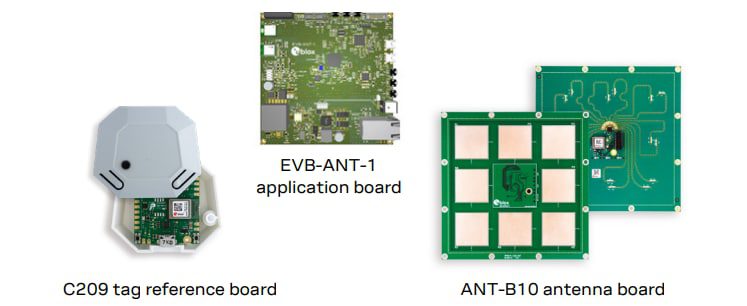- support@husseinkey.com
- livechat
u-blox XPLR-AOA-3 BLUETOOTH® Direction Finding Explorer Kit and Reference Design includes boards designed by u-blox for BLUETOOTH direction finding and indoor positioning, featuring the NINA-B4 module. The kit allows users to evaluate the ANT-B10 antenna board and the u-blox-optimized direction-finding algorithm. The kit is also a comprehensive angle-of-arrival (AoA) anchor point reference design.
The u-blox XPLR-AOA-3 BLUETOOTH explorer kit incorporates an ANT-B10 antenna board, an EVBANT-1 development board, and a C209 AoA tag. Furthermore, all necessary software for operating the kit is included.
The ANT-B10 antenna board features an antenna array comprising eight individual patch antennas and the NINA-B411 BLUETOOTH 5.1 module. The board is designed for commercial end-product integration via enabled low-power, high-precision indoor positioning. It speeds up evaluating, testing, and commercializing BLUETOOTH direction finding and indoor positioning solutions. Using the u-connectLocate software, which runs on the BLUETOOTH module, developers can efficiently execute the u-blox angle calculation algorithm.
The EVB-ANT-1 application board delivers developers a quick and easy way to evaluate the ANT-B10 antenna board. The board features the NXP RT1061 MCU for configuring and developing direction-finding applications and an Ethernet PHY chip and u-blox MAYA-W1 Wi-Fi module. An off-the-shelf pin header on EVB-ANT-1 permits easy connection to ANT-B10, producing a ready-to-use AoA indoor positioning anchor point in seconds.
The C209 is a tag established on the NINA-B406 BLUETOOTH LE module. The tag runs software that sends out BLUETOOTH 5.1 advertisement messages for reception by the ANT-B10 antenna board, which will then select the direction of the tag through the u-connectLocate software.
The XPLR-AOA-3 kit is able to explore many different indoor positioning applications. For instance, it can detect if an object is approaching a door, keep track of goods passing through a gate, avoid collisions between automated guided vehicles, or let a camera follow an asset moving in a room. By combining several XPLR-AOA-3 kits and triangulating the directions from three or more ANT-B10 antenna boards, a positioning system can be created.










